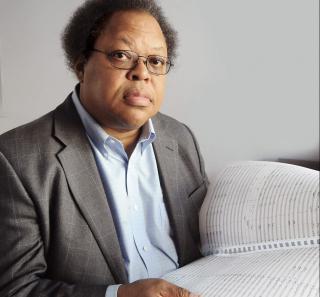George Lewis, the Edwin H. Case Professor of American Music at Columbia University and this year’s Karel Husa Visiting Professor of Music at IC will be presenting a lecture entitled “'Is Our Machines Learning Yet?' Machine Learning’s Challenge to Improvisation and the Aesthetic” on Tuesday, 10/24, at 7 pm in the Iger Lecture Hall in the Whalen Center for Music. This lecture is free and open to the public.
Improvisations by creative musical machines are now often indistinguishable from those created by humans. For many, this is a truly unsettling prospect, not least because musical creation can no longer be portrayed as the exclusive and ineffable province of designated superpeople. However, the advent of musical machine learning has fully corroborated my observation from 2000 that "as notions about the nature and function of music become embedded into the structure of software-based musical systems and compositions, interactions with these systems tend to reveal characteristics of the community of thought and culture that produced them." These communities of thought and culture now include whoever and whatever the machine and its programmers happen to be learning from, whether it be Google’s early ideology of using machine learning to create “compelling” art and music, face recognition programs that view people of color as criminals, or the example of Tay, the Microsoft Twitter chatbot whose tweets quickly devolved into racist, sexist, and even genocidal diatribes before being taken offline. If algorithms that “listen” to a corpus of musical behavior and "learn" to produce musical structures that create variations on that behavior are ultimately reproducing the cultural values embedded in that music, how can we create new musical and cultural values from an existing corpus? Perhaps nonmusical uses of machine learning, such as the self-driving car, can move us away from genre, aesthetics, and autonomous universalisms, to realize in machine improvisation John Stuart Mill’s observation that “Human nature is not a machine to be built after a model, and set to do exactly the work prescribed for it, but a tree, which requires to grow and develop itself on all sides, according to the tendency of the inward forces which make it a living thing.”

